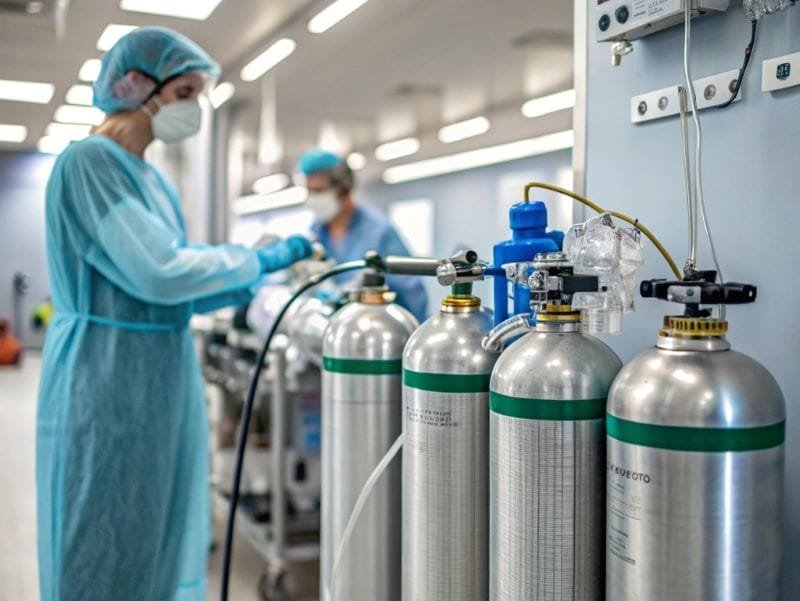Why is CO2 cylinder transportation a critical safety concern?
Transporting carbon dioxide (CO2) cylinders might seem straightforward, but it involves significant safety considerations. CO2, while non-flammable, is an asphyxiant in high concentrations, meaning it displaces oxygen and can lead to suffocation. Cylinders are also under high pressure, posing a risk of rupture or uncontrolled release if mishandled or damaged. A sudden release can cause frostbite due to rapid expansion and cooling of the gas. Furthermore, an unsecured cylinder can become a projectile in transit, causing severe injury or damage. Understanding these inherent risks is the first step toward safe and compliant transportation.
What are the key regulations governing CO2 cylinder shipment?
Shipping CO2 cylinders isn't a free-for-all; it's governed by a complex web of international and domestic regulations. These regulations aim to ensure safety and prevent incidents. Globally, the International Maritime Dangerous Goods (IMDG) Code for sea transport, the International Air Transport Association (IATA) Dangerous Goods Regulations for air cargo, and the United Nations Recommendations on the Transport of Dangerous Goods (UN Model Regulations) set the baseline.
Domestically, in Taiwan, the Dangerous Goods Transport Regulations administered by the Ministry of Transportation and Communications (MOTC) are paramount. These regulations cover everything from classification and labeling to packaging, documentation, and vehicle requirements. It's crucial to consult the latest versions of these regulations, as they are updated periodically.
How do I properly prepare CO2 cylinders for transport?
Proper preparation is the cornerstone of safe CO2 cylinder transport. Here's a breakdown of essential steps:
- Inspection: Before anything else, thoroughly inspect each cylinder. Check for visual damage, rust, dents, or signs of tampering. Ensure the hydrostatic test date is current (typically stamped on the cylinder neck). An expired test date means the cylinder is unsafe for transport and must be retested.
- Valve Protection: The valve is the most vulnerable part of a cylinder. Always ensure a valve protection cap is securely in place. This cap shields the valve from impact if the cylinder falls or is struck.
- Leak Checks: A quick leak check around the valve can prevent dangerous releases during transit. Soapy water applied to the valve connection will bubble if there's a leak.
- Securing: This is perhaps the most critical step. Cylinders must be secured upright to prevent them from tipping, rolling, or becoming projectiles. Use sturdy chains, straps, or custom cylinder cradles in the transport vehicle. Never rely on friction alone.
- Labeling and Placarding: Each cylinder needs to be correctly labeled with its contents (e.g., "CARBON DIOXIDE," UN1013), hazard warnings, and the supplier's information. The transport vehicle must also display appropriate placards indicating the presence of dangerous goods (e.g., Class 2.2 Non-flammable, Non-toxic Gas).
What are the risks associated with transporting CO2 cylinders, and how can they be mitigated?
The primary risks include asphyxiation, pressure rupture, frostbite, and uncontrolled release. Mitigation strategies revolve around strict adherence to safety protocols:
- Ventilation: Ensure adequate ventilation in the transport vehicle, especially during loading and unloading. Never transport CO2 cylinders in an enclosed passenger vehicle without proper ventilation.
- Temperature Control: Protect cylinders from extreme heat, which can increase internal pressure and lead to rupture. Avoid direct sunlight exposure.
- Impact Protection: Cushion cylinders and secure them to prevent impacts that could damage the valve or cylinder body.
- Emergency Preparedness: Carry a spill kit (though not for gas, it’s good practice for general emergencies), first aid kit, and know emergency contact numbers. Drivers should be trained in basic emergency response for gas leaks.
What documentation is required when shipping CO2 cylinders?
Proper documentation is essential for legal compliance and emergency response. Here's what you'll typically need:
- Shipping Papers/Dangerous Goods Declaration: This document provides detailed information about the shipment, including the UN number (UN1013 for CO2), proper shipping name (Carbon Dioxide, compressed), hazard class (2.2), quantity, and emergency contact information.
- Safety Data Sheet (SDS): An SDS for carbon dioxide must accompany the shipment. It provides comprehensive information on hazards, safe handling, emergency procedures, and first aid.
- Emergency Response Information: This could be part of the shipping papers or a separate document, detailing what to do in case of an accident or leak.
- Driver's License and Endorsements: The driver must possess a valid driver's license with any necessary dangerous goods endorsements for transporting hazardous materials.
Summary Table: Key Considerations for CO2 Cylinder Transport
| Aspect | Key Action / Consideration |
|---|---|
| Cylinder Inspection | Verify hydrostatic test date, check for damage (rust, dents, tampering). |
| Valve Protection | Ensure valve protection cap is securely in place. |
| Leak Checks | Perform a soapy water test around the valve area. |
| Securing Cylinders | Always secure cylinders upright with chains, straps, or cradles to prevent movement. |
| Labeling/Placarding | Ensure proper UN number, hazard class, and content labels on cylinders; display vehicle placards. |
| Ventilation | Ensure adequate airflow in transport vehicle; never transport in unventilated enclosed spaces. |
| Temperature Control | Protect cylinders from direct sunlight and extreme heat sources. |
| Documentation | Carry Shipping Papers/Dangerous Goods Declaration, SDS, and emergency response information. |
| Driver Training | Ensure drivers are trained in dangerous goods transport regulations and emergency procedures. |
| Emergency Preparedness | Have a first aid kit and emergency contact information readily available; know basic emergency response for gas leaks. |
By understanding and diligently applying these guidelines, you can significantly reduce the risks associated with shipping CO2 cylinders, ensuring the safety of personnel and the public while maintaining compliance with critical regulations.







